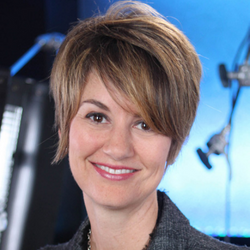[Podcast] TBC Chief Digital & Technology Officer Kicks The Tires on Digital Transformation
The auto aftermarket is proving itself adaptable as of late consistently outperforming forecasts in the face of automotive industry trouble. Smarter and budget-conscious consumers are keeping their cars longer, especially in face of higher interest rates and a looming recession. The pandemic also led more consumers into DIY mode which resulted in an increase in online shopping for aftermarket parts and accessories. Maintaining a strong online identity is now a necessity, and the acceleration of digital channels means brands must keep up or get left in the dust.
In this discussion, hosted by Luci Rainey, former SVP of Marketing at Comcast and PODS, we hear from John Williamson, Chief Digital and Technology Officer at TBC Corporation, one of North America’s largest marketers of automotive replacement tires with recognizable brands such as NTB, Tire Kingdom, Big O Tires and Midas. With over 25 years of experience in leading strategies for brands including Citibank, JP Morgan, Verizon, and Comcast, John will discuss how he is driving an innovative digital transformation at TBC to meet the needs of today’s digital-first consumers.
Speakers

John Williamson
Chief Digital & Technology Officer
TBC Corporation

Luci Rainey
Former Marketing Executive
Comcast & PODS
*The following transcription has been adapted from the TBC Chief Digital & Technology Officer Kicks the Tires on Digital Transformation Podcast.
Luci:
Hi everybody. Welcome to Movers & Shakers today. Digital transformation continues to be top of mind with all companies across the United States. But it’s a particularly hot topic in the automotive industry. From online car purchase to AI capabilities to self-driving cars – digital and automotive is growing.
The aftercare market is no different. And today, we welcome John Williamson, Chief Digital and Technology Offer from TBC Corporation. John has a very successful history of launching different digital transformation efforts, across many verticals, from banking, to cell phone to telecom, and now John, you’re at TBC Corporation.
Tell us a little bit about yourself and your journey to TBC, John.
John:
Great. Thank you, Luci. It’s great to see you and thanks for having me on.
So I spent my career, for the most part, leading large-scale digital transformation at a number of really big brands, so I started that journey in financial services I was at Citibank following that, I was in the telecom space with Verizon and before joining the automotive space, I was in the telecom space with Comcast.
It’s interesting because you talked about kind of what that journey has been. The words digital transformation aren’t new. What’s new is how they’re used together and what that means.
When I started working in the financial services space at Citibank, it was the late 90s and we were building websites. That was digital transformation back then. In the 2000s, we started offering transactional capabilities: the ability to purchase a cell phone or plan online.
Today, digital transformation is how do you re-imagine operating models and complete customer journeys.
So, you know, we’re trying to think, end to end, as we think about the work. We’re doing the TBC for our customers, as well as our employees.
Luci:
Now, John, tell us a little bit about TBC. Some people may not know that acronym, but when you say the names that are in your portfolio, I think the folks on the webinar today are going say, “Oh, I know them.” So, tell us about that.
John:
You’re correct. TBC is not a well-known brand or household name, but we own several brands that probably a lot of our viewers know. We’re one of the largest automotive services providers in the U.S. and have automotive services locations, globally.
We have brands on the franchise side, like Midas, as well as on the west coast of the U.S. like Big O Tires. These are both really incredible franchises for us. And then we have company owned retail stores, and that would be NTB, which is pretty widespread across the U.S. We also have Tire Kingdom in Florida.
We also have one of the largest wholesale aftermarket businesses specifically around tires, so that’s a very large part of our operations as well. Our digital transformation cuts across both of those areas, so there’s a big component that’s B2C, but also B2B as well.
Luci:
That’s great.
So, you know, just to talk about, a little bit about our sponsor, who is V12, soon to be Porch Group Media. They are very excited next week to launch the Porch Group Media Network, which expands on their ability to create audiences and connect those audiences with customers and homeowners who are in the home purchase process or the moving journey.
I don’t think people realize the size of the auto care aftermarket. It’s a $500+ billion industry and predictions of growth are strong CAGR or just really straight, 3% to 5% annual revenue growth targets over the next three years. The last two years were very healthy. Last year was 8%, indicative of a healthy growth market. It makes sense given the state of the auto inventory, and while things are coming back for new cars, now interest rates are up. and it makes even buying a used car very expensive.
I was just listening to the Cox Automotive Economist, and he was sharing that, because of where interest rates are it’s difficult to get a used car for under $400 a month payment. So again, in comes people hanging onto their cars longer which benefits the auto care aftermarket industry.
I was also shocked at the size of the industry, and the fact that industry employs over four million people. The industry is just massive, and so what an opportunity to talk with TBC on digital transformation.
Are you enjoying this content? Be the first to know when a new podcast is released:
Digital Transformation in the Auto Aftercare Market
Luci:
John, why is digital transformation still important for companies? It seems like car stuff has to be done in person. Whether you’re buying a car, doing a test drive, or bringing your car in for maintenance, you can’t do it all online. So, what does digital transformation mean in the auto aftercare market?
John:
Digital transformation today isn’t building an app or a website. It’s how do you re-imagine customer journeys, employee journeys, and operating models?
So, the work that we’re doing is thinking, end to end on those customer journeys. How do we power them up, not just online, but in-store, and then post-purchase, through digital, data, and technology?
If you think about your last interaction with your automotive services provider, there’s a lot of opportunity to think about how we can build truly modern experiences that meet the expectations of today’s consumers.
You know, why can’t getting automotive service be as easy as ordering food through DoorDash, or any other interactions that are happening?
It’s interesting, we see it because we’ve done a lot of customer research and found the two most important things for our consumers in automotive services are convenience and trust. If you think about the power of leveraging digital data and technology, the hyper convenience that can deliver for the consumer from a trusted perspective, it allows us to deliver a lot more transparency and truly set the right expectations for customers on how long their visit it’s going to be, what that process looks like for them, etc.
This allows us to kind of set the bar on what the customer experience should be for our customers throughout the customer life cycle.
Luci:
John, you’ve led digital transformation in these different industries, like financial services, telecom and internet, and you once told me that change sometimes has to be a revolution, not an evolution. What customer journey opportunities or marketing opportunities do you see for TBC or the aftercare market in general? What are you attacking first in this area?
John:
When joining TBC and leading this transformation, I did a lot of research and looked at what the current experiences, not only with the brands for TBC were but across our competitive set. The industry itself is highly transactional today.
We think about, how do we service you at the point in time that you go on to our website or you call us. The industry as a whole doesn’t think about how to build deep customer relationships, so that’s a big part of the work that we’re doing.
That goes, not only from a customer journey perspective is thinking through, how do we build awareness of the great experiences we’re having. For example, our Google reviews are a big part of that.
So, a lot of the work that we’re doing initially is trying to reimagine what those experiences are through a journey led approach and looking at the things beyond just the transaction. How do we get you to come back with your second vehicle or the next time you need service with us? So that’s a big part of the focus that we have.
Luci:
John, how are you leveraging audiences or data through your journey? I would imagine for different audiences, you’re thinking about different journeys or different segments. Talk to us a little bit about how you’re thinking about that.
John:
Yeah, so for us, data is the thread that should power all of our customer and employee experiences. When I joined TBC, I oversaw our digital data in innovation organization. Recently, we added in the technology organization within the scope of our responsibility as well.
Our data organization is very important for how we personalize the journeys we have and how we leverage all of those interactions to help power up our overall operations to make sure that we’re delivering operational excellence.
For the personalization component of itself, we’re thinking in terms of the end-to-end on the journey, and it starts offline. It could be how do we retarget you if you’ve been, you know, interacting with us, either offline or online, through specific experiences we have on the site. For example, Luci you may drive an SUV and you may have been doing some research on purchases of tires for that. How do we tailor the experience for your specific needs?
What’s equally important is how we take that data and extend that journey into the store experience itself. So that’s a big part of the work we’re doing, and I’ve talked about customer journeys a lot. You cannot really deliver that unless you have very strong data capabilities. Whether it’s figuring out how to personalize the experience or how to deliver relevance of the experiences that your customers are having and then leveraging those customer interactions to help deepen the customer connection and bring that customer back into the store at a future point. Data is a really, really important part of the work that we’re doing.
Auto Aftermarket Marketing Opportunities
Luci:
John, we spoke earlier about how cars just really aren’t depreciating the way that they used to. In fact, people are waiting longer now to buy cars, especially with interest rates as high as they are. What marketing opportunities does this present for a company like TBC to get people to come in and use your services?
John:
Customers are hanging onto their cars much longer than they used to and that was a trend before the pandemic and then obviously as a result of the pandemic it was very difficult to buy a new vehicle but we see, you know, post that, whether it’s interest rates of the broader economy that that, that trend is not decreasing.
That comes back to the point that I was making earlier about how to build a customer relationship. Because our customers may purchase a set of tires or it could be brakes. After that, it could be their annual service. There are more opportunities on that same vehicle that we will have to help bring them back in and support and service them at a later point.
So, it opens up a lot of opportunities for us around a lot of the life cycle management work that we’re doing.
I know you had talked about moving as part of that. That’s an important part of it as well. So, we have customers, who are Midas customers, who are part of the U.S., and if they move somewhere else, how do we think about continuing that relationship within TBC or any of our other brands?
How to Boost Customer Loyalty in the Auto Aftermarket Industry
Luci:
That’s great. One of the themes you just touched on again was customer loyalty. Dealerships make a lot of their profits on aftercare with lease purchase packages and just general care and maintenance. There’s talk of things like subscription of car ownership. Do you see a digital subscription model of any kind in TBC’s future?
John:
Maybe. It’s interesting if you look across the category, there are a few subscription models out there. I’m not quite sure any of reach grade scale, and we’re looking across the opportunities around that. I think even in advance of that Luci, building the right platforms and ecosystem that help to kind of foster facilitate a true relationship with our customers is important.
As we build that out, we’re going to look for opportunities to help better tie them to us, and it could take the form of subscription services, possibly, but also, loyalty programs. So, there are a number of things we’re looking at as we re-imagine the customer experience. Both of those things are fairly interesting for us.
Luci:
That’s exciting. I did some research of my own. According to Forbes, there are huge benefits of digital transformation and optimizing the customer journey including huge numbers of satisfaction, clearly 20% to 30% improvements in satisfaction and 20% increase in revenue or economic gains. The other topic that Forbes was sharing with regard to transformation is things to get right.
They talked a lot about most people get it wrong and I wanted to talk to you a little bit about that, because you just mentioned, like, it’s important to build the right platforms and ecosystem. It’s important to have the right data infusion. And, according to Forbes, understanding the journey versus a project is critical. Clear leadership, clearly TBC has gotten that right John. And also, really understanding the complexity of execution.
You know, of these three things John, would you pick one to really make sure you hone in on, or would you pick one to understand that this is where things can kind of go off the rails.
John:
Luci, I can say all of those are important. One of the items that may be embedded in one of these, which is often overlooked. And I know you and I both know not all transformations are successful. And there are many reasons transformations are successful. By the way, I worry less about the technology. We have an incredibly talented technology team. The biggest challenge I’ve seen throughout my career is change management. How do you bring along the entire organization in the change that you’re executing as well as your customers for us our franchisees, which are really important for us. And unless you do that, you will have very limited success in the work you’re doing.
The front lines have to be a part of that. They are the folks who are interacting with our customers every single time. Every single day they are the heroes. So, that change management aspect has to transcend every part of the organization, and part of that is you have to build a catalyst for change because it’s hard in whatever industry you are in unless it’s not a great situation for the company.
You usually have a successful business model, and you have to make the case on why we need to make this change. So it’s building that catalyst for change, but then also thinking very deeply on how you help bring the entire organization with you. I think a lot of transformations have challenges along the way.
Clear leadership and direction are very important. It starts at the top from the board level, the CEO and the senior leadership of the company. There has to be drive and belief there. But again, it’s a bit of a barbell because you in addition to that you have to bring along the front lines as well.
Luci:
Yeah, I couldn’t agree more. In my last role. I was more involved in a brand transformation and the most important part really was our frontline people and how they really took ownership of the brand. They were really the best part of the brand, and the customers loved the people and the service they got. And I would imagine that it’s somewhat similar in your organization because your front lines are the ones that really are the face of the company to the customer – doing the work, greeting them, making sure it’s a seamless experience, and so on and so forth.
John:
They bring to life to the company every single day, and whether it’s the brand transformation that you’re executing, they’re the ones who are going to bring that to life for the customer experiences that we’re looking to deliver. They’re the ones who have to bring that to life, and they have to be as passionate about what that future brand is, or what that customer journey is as we are. So, that’s, really, really important.
Connecting with EV Customers in the Auto Aftermarket Industry
Luci:
That’s great. How do you see TBC pivoting the care for electric vehicles or EVs? It’s a huge shift in auto aftercare. I mean, the cars are completely different. Talk to us a little bit about how you guys are talking about that in your world.
John:
You know, it’s fascinating. I think the latest stat I saw was that 50% of new vehicles are projected to be EVs by 2030. This is a catalyst for change across the automotive services industry. In an EV, you’re not going for an oil change, but tires are still very important. A core part of our business is the distribution of aftermarket tires.
Tire wear is much higher on EVs. They weigh significantly more than combustion engine cars as well. So, if you think about the implications to the service mix, you’re going to offer is going to be a different type of service of the type of equipment that you have. Because the cars are heavier, even the lifts that you have within the retail store will be very different.
We’ve started looking at that journey from a digital and data-driven perspective. Looking at the auto care experiences for EV customers will be really important as a part of that. But additionally, we’re thinking through how do we bring to life or help our customers who have EVs shop in a smarter way. So, we were one of the first to offer the ability to search specifically on EV-rated tires. There are ratings on EV tires and that’s allowing us to capture a share of those customers early on. But we’re looking to build on that.
And, again, it’s not just things we’re doing online or in the retail store. It’s kind of thinking through end to end on that journey. EV customers present a very large opportunity, and we’re excited about it.
Luci:
That’s great. John, this has been a great discussion. I’m so excited to see you leading this digital transformation at TBC.
Podcasts You May Also Like:
- How Car Dealerships Can Make the Shift to the Digital World
- Convergence of the Offline and Online Car Shopping Experience
- How to Leverage Machine Learning to Predict Car Shopping Prospects and Timing
Did you find this content insightful? Join our podcast mailing list:
Target In-Market Auto Aftermarket Shoppers
With information on over 260+ million consumers, 190+ million VINs, 170 million email addresses, plus demographics, our automotive aftermarket audiences provide the insights you need for the right consumer connections to increase service appointments and sales. Contact us today!








